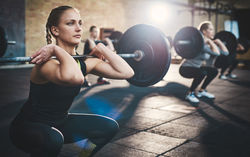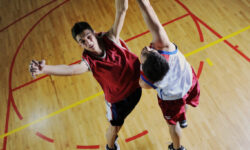
Archery is going through something of a boom. It could be the sight of Legolas fighting off the hordes of villains in Lord of the Rings. Or Katniss Everdeen firing deadly accurate arrows in The Hunger Games, but suddenly archery is a cool sport.
It is not one of those sports that immediately springs to mind when talking about health and fitness. But, The challenges you face as an archer might surprise you.
Among the skills and abilities needed by archers are: mental strength, aerobic endurance, balance and coordination, reaction time, motivation & self confidence, skill/technique, agility, flexibility, strength & power.
The most obvious of these is the need for a high level of upper body strength and flexibility. An archer needs to be able to shoot arrows with accuracy and to be able to repeat that action without suffering fatigue.
To prepare for an archery competition or to train effectively, archers need to work on their strength, flexibility and power endurance.
Resistance training for archery
Specific exercises will target the muscle groups used in archery.
Draw the bow – the shoulders and upper back.
Control the draw arm – the upper and lower shoulder muscles.
Extend the bow arm – the arm muscles.
Hold the bowstring – the fingers.

Flexibility training
The archer uses flexibility to performed the required technique. Muscle tightness may affect accuracy and increase injuries. Regular stretching will improve flexibility. The archer should stretch before each activity (training and competition), plus other stretches, such as proprioceptive neuromuscular facilitation (PNF) (*see below) and active stretches. This will increase the flexibility of specific muscle groups.
In an interview with The Guardian, British Olympic Archer Naomi Foulard said that on a typical day she would spend four hours a day practising shooting. She followed this with 90 minutes of strength and conditioning in the gym or a four-five mile run.
Foulard followed this pattern six days a week, unless she had competitions.
Mental focus of archery
While the physical demands of archery are surprisingly high, the other element to successful archery performances is an ability to focus and use high levels of concentration. A successful archer will zone into the task to cope with the stress and pressure of competition.
This area warrants far more space than can be given here. But, in essence, a successful archer takes control of as many variables as possible. Knowing that every aspect of physical preparation has been done is important for the archer’s self confidence. Going through familiar routines while preparing for competition is important. Learning what works for each person, such as what music to listen to on the head phones, what snacks to eat during competition, how to recover and relax between each shot. The archer and his or her coach will explore each area and make sure they are in the very best frame of mind before competition.
People of all abilities and ages can enjoy archery. It is social, challenging and competitive. It also helps develop patience, focus and self confidence.
Take a look at the archery offering at Kelsey Kerridge and have a go at releasing your inner Legolas or Katniss.
*Proprioceptive Neuromuscular Facilitation (PNF) is a more advanced form of flexibility training. It involves both stretching and contraction of the muscle group being targeted. PNF stretching was originally developed as a form of rehabilitation, and to that effect it is very effective. It is also excellent for targeting specific muscle groups. As well as increasing flexibility, it also improves muscular strength







